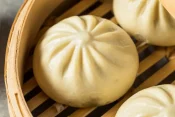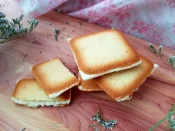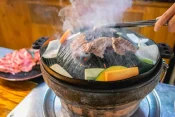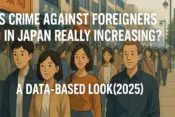Kyoto’s Delicate Delight: Discover the Exquisite World of Yuba
Kyoto, the cultural heart of Japan, is a city renowned for its traditional arts, stunning temples, and refined cuisine. Among its many culinary treasures, yuba stands out as a unique and exquisite delicacy that has captured the hearts and palates of food enthusiasts for centuries.
What is Yuba?
Yuba, also known as tofu skin, is a delicate film that forms on the surface of simmering soy milk. This thin layer is carefully lifted and collected, resulting in a silky smooth and slightly chewy texture. Yuba is a versatile ingredient that can be enjoyed in various forms, from fresh and creamy to dried and slightly crunchy.
Yuba comes in different types, each with its own unique characteristics:
- Fresh Yuba (Nama-yuba): This delicate and creamy yuba is often served as sashimi or in salads.
- Dried Yuba (Kanso-yuba): This type of yuba has a firmer texture and is often used in simmered dishes or stir-fries.
- Yuba Sheets (Yuba no Maki): These thin sheets of yuba are used to wrap various ingredients, creating delicious and visually appealing rolls.
Beyond its exquisite taste and versatility, yuba is also a nutritional powerhouse. It’s packed with protein, low in fat, and a good source of iron and calcium.
Why Yuba is a Must-Try in Kyoto
Yuba holds a special place in Kyoto’s culinary heritage. Its production dates back centuries, with roots in Buddhist traditions that emphasized vegetarian cuisine. Yuba became a popular ingredient in Kyoto’s temples and monasteries, and its popularity eventually spread throughout the city.
Today, yuba is a staple in traditional Kyoto cuisine, often featured in kaiseki ryori (multi-course haute cuisine) and other elegant dishes. Its delicate flavor and unique texture make it a perfect complement to a wide range of ingredients, from vegetables and seafood to meat and poultry.
Personally, I can’t resist the allure of yuba. Whenever I see it on a menu, my wife and I get incredibly excited. There’s something about its silky texture and subtle sweetness that just makes our taste buds sing. It’s a true culinary delight that we always look forward to enjoying in Kyoto.
Where to Find the Best Yuba in Kyoto
Kyoto is a haven for yuba lovers, with numerous restaurants and shops specializing in this delicacy. Here are a few recommendations:
1.Kyoyuba Dokoro Shizuka Nijojo-ten
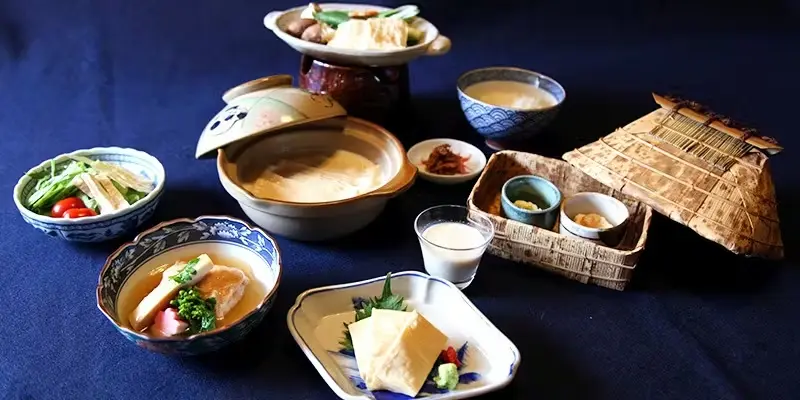
Located near Nijo Castle, this long-established yuba specialty restaurant offers a variety of yuba dishes, from traditional to innovative creations.
- Address: 233-4 Daimonjimachi, Kuro-mon Higashi-iru, Oike-dori, Nakagyo-ku, Kyoto, Japan 604-8315
- Phone: +81 75-813-1517
- Hours: Mon, Wed, Thu, Fri, Sat, Sun 11:30 AM – 2:30 PM, 5:00 PM – 7:30 PM (Closed on Tuesdays)
- Google Maps rating: 4.3
- Website: https://www.seike-yuba.com/
2.Kodaiji Hashiba
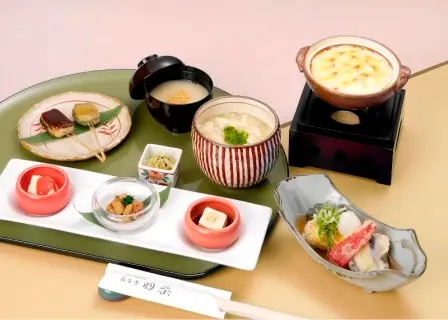
Nestled in the scenic Kodaiji temple complex, this restaurant offers a refined yuba experience as part of its traditional Kyoto cuisine (kyo-ryori) menu.
- Address: 530 Shimogawara-cho, Higashiyama-ku, Kyoto, Japan 605-0825
- Phone: +81 75-531-0666
- Hours: Daily 11:00 AM – 3:00 PM
- Google Maps rating: 4.3
- Facebook: https://www.facebook.com/kodaiji.hashiba/
3.Senmaruya Honten
This specialty shop in Nakagyo Ward offers a unique yuba hot pot experience, as well as a wide selection of yuba products to take home as souvenirs.
- Address: 541 Yaomachi, Shijo Agaru, Sakaimachi-dori, Nakagyo-ku, Kyoto, Japan 604-8123
- Phone: +81 75-221-0555
- Hours: Mon, Tue, Thu, Fri, Sat, Sun 10:30 AM – 3:00 PM (Closed on Wednesdays)
- Google Maps rating: 4.4
- Website: https://senmaruya.co.jp/pages/restaurant
When choosing yuba, look for products that are fresh and have a creamy white color. If you’re buying dried yuba, make sure it’s not too brittle or discolored.
Yuba Culinary Adventures
Yuba is incredibly versatile and can be enjoyed in a variety of ways. Here are a few ideas to get you started:
- Yuba Sashimi: Fresh yuba is often served as sashimi, drizzled with soy sauce and wasabi.
- Yuba Salad: Combine fresh yuba with your favorite vegetables and a light dressing for a refreshing and healthy salad.
- Yuba Hot Pot (Yudofu): Simmer fresh yuba in a flavorful broth with vegetables and tofu for a comforting and nutritious hot pot.
- Yuba Sushi Rolls: Wrap fresh or dried yuba around sushi rice and your favorite fillings for a unique twist on traditional sushi.
Conclusion
Yuba is a true culinary gem that embodies the essence of Kyoto’s refined cuisine. Its delicate texture, subtle flavor, and versatility make it a must-try for any food enthusiast visiting Kyoto. Whether you’re enjoying it in a traditional Japanese restaurant or experimenting with it at home, yuba is sure to delight your senses and leave you craving more.
Reviews from Visitors
There are no reviews yet. Be the first one to write one.

